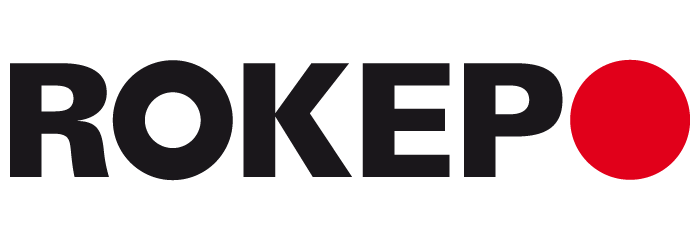The Chief Technology Officer’s responsibilities are broad and varied. Nevertheless, there are a few crucial areas in which a professional CTO must succeed. Now, we’ll discuss some tech obstacles that should be solved following the duties of a CTO. A CTO is responsible for selecting an appropriate mobile or web development stack. Technologies influence the project’s maintainability, scalability, and stability.
A CTO is usually the person in charge of the organization’s technological needs as well as its research and development (R&D). Sometimes known as a Chief Technical Officer, this individual thoroughly examines the short and long-term needs of an organization. They then sanction investments designed to help the organization cloud service cto responsibilities reach its objectives. While that’s a perfectly sound definition let’s delve a bit deeper into the world of CTO roles and responsibilities. “The role of the CTO continues to evolve,” says Craig Stephenson, managing director for the North America Technology Officers Practice at organizational consulting firm Korn Ferry.
Chief Technical Officer Responsibilities
CTOs keep an eye on the competent specialists’ pool and form the team. Following that, Chief Technology Officers must manage, coordinate, and encourage team members. A CTO must keep an eye on trends and decide whether to follow them in order to accelerate the startup’s growth. Furthermore, they keep an eye on competitors’ products to keep up with the latest developments. To make this technical vision a reality, chief technologists should always keep abreast of evolving trends and oversee the chunking of a product’s functional elements.

Along with technical expertise, they must demonstrate leadership, decision-making, management, and business strategy skills. Besides making critical decisions alongside other company leaders, a CTO must develop policies regarding technology so that organizations run smoothly. A well-versed CTO is knowledgeable in roadmapping & development, innovation, leadership, strategic planning, AI, machine learning, cloud, DevOps, and budgeting, amongst other skills and technologies. Depending on the organization, A CTO typically oversees the information technology (IT) and technology of a business. Whether the role oversees a private company or a public institution, the CTO must be capable of making company-wide decisions regarding technology.
Distinguished Engineer, Physical Infrastructure, Office of the CTO
The Operational Director concentrates on the business aspect of technology integration, leaving developers to handle their everyday work. Playing this chief technology officer role, the executive is capable of establishing a plan and coordinating an organization’s engineering efforts without a coding background. Such CTOs may have skills in finance administration, project management, mentoring, and other non-technical skills. A chief technology officer (CTO) is the highest technology executive position within a company and leads the technology or engineering department. They develop policies and procedures and use technology to enhance products and services that focus on external customers. The CTO also develops strategies to increase revenue and performs a cost-benefit analysis and return-on-investment analysis.
- Thus, before taking on CTO responsibilities, lots of Chief Technology Officers start out as lower-level managers and grow to higher positions.
- The CTO is supposed to represent the company in narrowly-selected tech associations and technology-related conferences to show presence on the market and promote the company’s tech achievements.
- The CIO advises on enterprise software, anticipates security and integration problems, and studies the advantages of trending technologies.
- It means they have to boast a wide spectrum of know-how rooted in both the technical and managerial realm.
- A CTO is supposed to assess the timeframes for the development team and is responsible for every release the company does.
- Thereby, CTOs make sure their strategy is verified and implemented as intended.
This includes a technical strategy with clear goals, obstacles, and performance metrics. Now that the company has taken off the ground, CTOs focus on talent acquisition and managing assembled teams. During the build phase, these specialists are usually the most well-informed teammates in the room from a technology standpoint. Thus, they provide their team with the relevant technology stack, perform product management and handle defect triages if needed. Chief Technological Officers should also have enough business knowledge under their belt to merge technology-relevant decisions with the company’s results and objectives.
CTO as a service:
The CTO functions in the process are to plan and perform this solution from scratch. Developing the ideal product with all of the necessary characteristics for a certain niche is a challenging task. Months of labor and hard-earned funds are wasted when a product fails. Let’s view what are the duties of a CTO during the growth stages of the startup.

Many CTOs have at least a master’s degree, and some even have Ph.D.s in IT or business administration fields. Most CTOs undergo training throughout their careers in IT departments. They may also earn several certifications in development, programming, database administration or other related fields. And yet, the Chief Technology Officer is one of the most undefined positions among C-level management making it important to identify CTO roles and responsibilities. To run technology strategy implementation smoothly, CTOs have to know the team members’ strengths and weaknesses.
The CTO Operational Management Duties
This versatility provides opportunities for CTOs to advance to the highest levels of organizations. Mr. Sunthara brings over two decades of healthcare technology experience to the lactation services health tech platform, and will help build the platform itself, as well https://www.globalcloudteam.com/ as SimpliFed products and technology. CIOs primarily work with a company’s IT staff as a managing leader. They are typically in charge of discovering and analyzing how technology processes affect the business, as well as identifying potential areas of improvement.
The CTO job role has expanded to include producing individualized customer experiences that would previously have been handled by marketing or product development teams. When CTOs assist in developing business plans, they guarantee that consumers receive actual benefits from a product or service. One more point to consider is the CTO experience is always marked in the chief technology officer job description. Almost every CTO began their career by obtaining a bachelor’s computer science degree or a closely related subject. So, communication skills are also necessary to fit the chief technology officer job description example on average and should completely meet it. A chief technology officer (CTO) is responsible for overseeing the development and dissemination of technology for external customers, vendors, and other clients to help improve and increase business.
CTO Roles and Responsibilities
The Chief Technology Officer (CTO) role first made its appearance in the C-suite of high-tech and dot.com companies during the mid-to-late 1990s. The role of a CTO comes with great responsibility, and it may take a longer way to get there. A solid education in a technology-related field forms the foundation of a CTO’s professional training. Typically, CTOs come from an educational background in Computer Science, Information Technology, Engineering, or Mathematics. Constant developments both in business trends and technology have inevitably driven companies toward strengthening their technological capabilities and solutions.
They also back up startups on various grounds and get the ball rolling until the business is off the ground. As the business reaches its culmination, the CTO takes on the executive-level position with no engineering tasks. At this stage, they raise brand awareness and embody the company’s mission at tech events, summits, and conferences. When the company railroads into the market, CTOs delegate the majority of tech-related tasks to other workers.
How to become a CTO
A CTO must acquire an innovative mindset to find new ways to create products, processes, cost structures, operating models, and application development. This type of CTO may envision how technology will be used within the company while setting the technical strategy for the company. This CTO will also look at how to further implement new technologies within the company to ensure its success.
